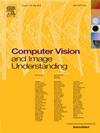From bias to balance: Leverage representation learning for bias-free MoCap solving
IF 4.3
3区 计算机科学
Q2 COMPUTER SCIENCE, ARTIFICIAL INTELLIGENCE
引用次数: 0
Abstract
Motion Capture (MoCap) is still dominated by optical MoCap as it remains the gold standard. However, the raw captured data even from such systems suffer from high-frequency noise and errors sourced from ghost or occluded markers. To that end, a post-processing step is often required to clean up the data, which is typically a tedious and time-consuming process. Some studies tried to address these issues in a data-driven manner, leveraging the availability of MoCap data. However, there is a high-level data redundancy in such data, as the motion cycle is usually comprised of similar poses (e.g. standing still). Such redundancies affect the performance of those methods, especially in the rarer poses. In this work, we address the issue of long-tailed data distribution by leveraging representation learning. We introduce a novel technique for imbalanced regression that does not require additional data or labels. Our approach uses a Mahalanobis distance-based method for automatically identifying rare samples and properly reweighting them during training, while at the same time, we employ high-order interpolation algorithms to effectively sample the latent space of a Variational Autoencoder (VAE) to generate new tail samples. We prove that the proposed approach can significantly improve the results, especially in the tail samples, while at the same time is a model-agnostic method and can be applied across various architectures.

从偏见到平衡:利用表示学习来解决无偏见的动作捕捉
动作捕捉(MoCap)仍然由光学动作捕捉主导,因为它仍然是黄金标准。然而,即使从这样的系统中捕获的原始数据也会受到来自幽灵或遮挡标记的高频噪声和错误的影响。为此,通常需要一个后处理步骤来清理数据,这通常是一个冗长而耗时的过程。有些研究试图以数据驱动的方式解决这些问题,利用动作捕捉数据的可用性。然而,在这些数据中存在高层次的数据冗余,因为运动周期通常由类似的姿势组成(例如站立不动)。这种冗余影响了这些方法的性能,特别是在罕见的姿势。在这项工作中,我们通过利用表示学习来解决长尾数据分布的问题。我们介绍了一种新的不平衡回归技术,它不需要额外的数据或标签。我们的方法使用基于马氏距离的方法来自动识别稀有样本并在训练过程中适当地重新加权,同时我们使用高阶插值算法对变分自编码器(VAE)的潜在空间进行有效采样以生成新的尾部样本。我们证明了所提出的方法可以显著改善结果,特别是在尾部样本中,同时是一种模型无关的方法,可以应用于各种体系结构。
本文章由计算机程序翻译,如有差异,请以英文原文为准。
求助全文
约1分钟内获得全文
求助全文
来源期刊

Computer Vision and Image Understanding
工程技术-工程:电子与电气
CiteScore
7.80
自引率
4.40%
发文量
112
审稿时长
79 days
期刊介绍:
The central focus of this journal is the computer analysis of pictorial information. Computer Vision and Image Understanding publishes papers covering all aspects of image analysis from the low-level, iconic processes of early vision to the high-level, symbolic processes of recognition and interpretation. A wide range of topics in the image understanding area is covered, including papers offering insights that differ from predominant views.
Research Areas Include:
• Theory
• Early vision
• Data structures and representations
• Shape
• Range
• Motion
• Matching and recognition
• Architecture and languages
• Vision systems
 求助内容:
求助内容: 应助结果提醒方式:
应助结果提醒方式:


